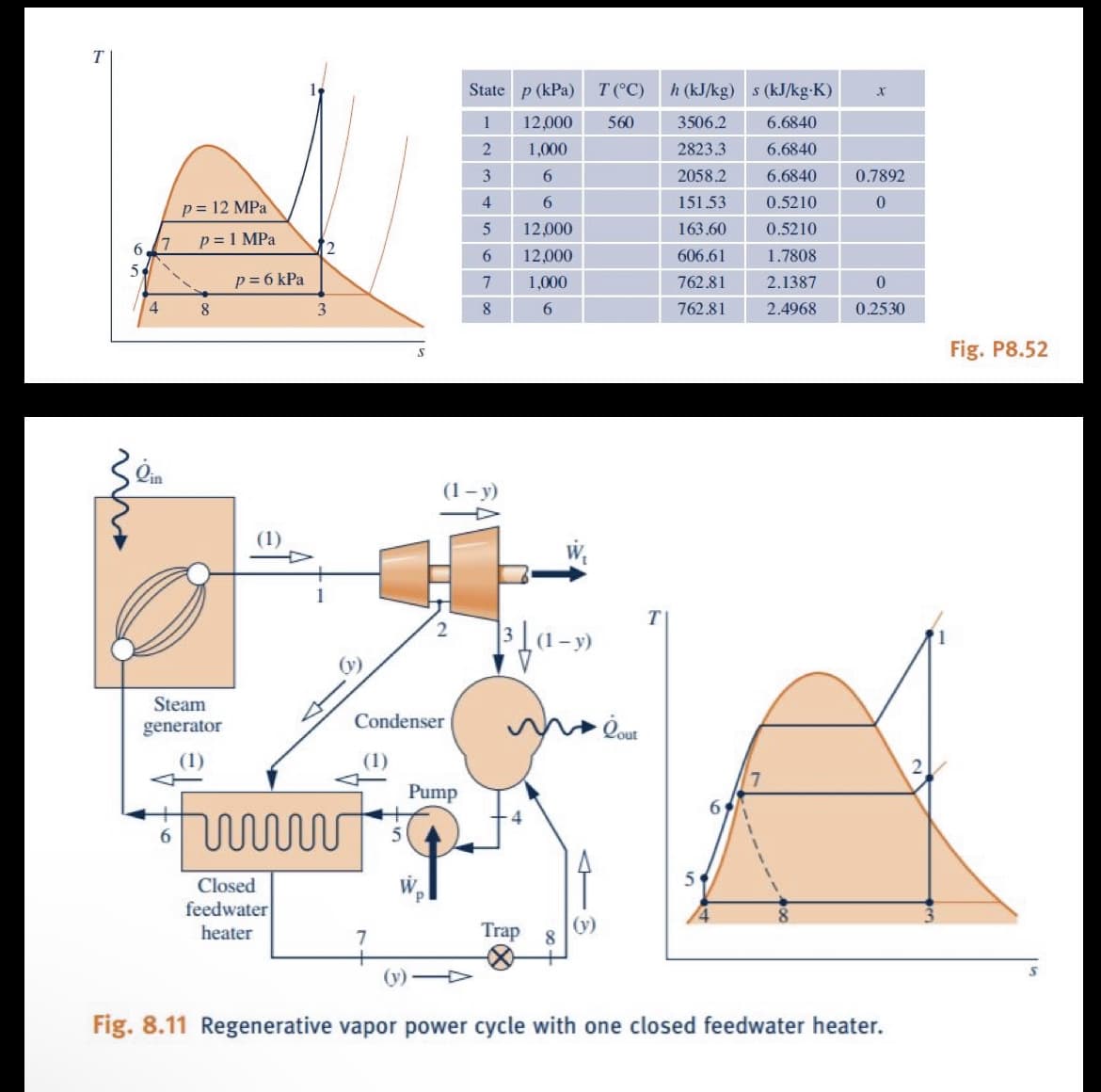As indicated in Fig. P8.52, a power plant similar to that in Fig. 8.11 operates on a regenerative vapor power cycle with one closed feedwater heater. Steam enters the first turbine stage at state 1 where pressure is 12 MPa and temperature is 560 C. Steam expands to state 2 where pressure is 1 MPa and some of the steam is extracted and diverted to the closed feedwater heater. Condensate exits the feedwater heater at state 7 as saturated liquid at a pressure of 1 MPa, undergoes a throttling process through a trap to a pressure of 6 kPa at state 8, and then enters the condenser. The remaining steam expands through the second turbine stage to a pressure of 6 kPa at state 3 and then enters the condenser. Saturated liquid feedwater exiting the condenser at state 4 at a pressure of 6 kPa enters a pump and exits the pump at a pressure of 12 MPa. The feedwater then flows through the closed feedwater heater, exiting at state 6 with a pressure of 12 MPa. The net power output for the cycle is 330 MW. For isentropic processes in each turbine stage and the pump, determine (a) the cycle thermal efficiency (%). Determine (b) the mass flow rate into the first turbine stage, in kg/s. Determine (c) the rate of entropy production in the closed feedwater heater, in kW/K. Determine (d) the rate of entropy production in the steam trap, in kW/K.
As indicated in Fig. P8.52, a power plant similar to that in Fig. 8.11 operates on a regenerative vapor power cycle with one closed feedwater heater. Steam enters the first turbine stage at state 1 where pressure is 12 MPa and temperature is 560 C. Steam expands to state 2 where pressure is 1 MPa and some of the steam is extracted and diverted to the closed feedwater heater. Condensate exits the feedwater heater at state 7 as saturated liquid at a pressure of 1 MPa, undergoes a throttling process through a trap to a pressure of 6 kPa at state 8, and then enters the condenser. The remaining steam expands through the second turbine stage to a pressure of 6 kPa at state 3 and then enters the condenser. Saturated liquid feedwater exiting the condenser at state 4 at a pressure
of 6 kPa enters a pump and exits the pump at a pressure of 12 MPa. The feedwater then flows through the closed feedwater heater, exiting at state 6 with a pressure of 12 MPa. The net power output for the cycle is 330 MW.
For isentropic processes in each turbine stage and the pump, determine (a) the cycle thermal efficiency (%). Determine (b) the mass flow rate into the first turbine stage, in kg/s. Determine (c) the rate of entropy production in the closed feedwater heater, in kW/K. Determine (d) the rate of entropy production in the steam trap, in kW/K.
a) 43.8%
b) 259.55 kg/s
c) 73.33 kW/K
Need answer to d.

Trending now
This is a popular solution!
Step by step
Solved in 7 steps with 7 images









